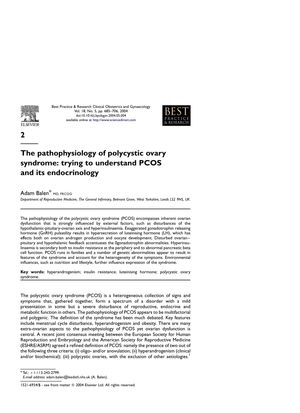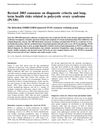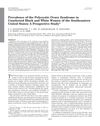The pathophysiology of polycystic ovary syndrome: trying to understand PCOS and its endocrinology
October 2004
in “Best Practice & Research in Clinical Obstetrics & Gynaecology”

TLDR The conclusion is that PCOS is caused by ovarian sensitivity to hormones and disrupted hormone control, possibly due to ovarian factors, and more research is needed.
The document from 2004 explores the complex pathophysiology of polycystic ovary syndrome (PCOS), a condition characterized by symptoms such as menstrual disturbances, hyperandrogenism, and obesity. It is influenced by genetic and environmental factors and is defined by two out of three criteria: oligo-/anovulation, hyperandrogenism, and polycystic ovaries. The paper discusses the role of exaggerated GnRH pulsatility, hypersecretion of LH, insulin resistance, and hyperinsulinaemia in PCOS, noting the variability in its expression, with a high prevalence among South Asian women. It also addresses the risks of cardiovascular disease and type 2 diabetes associated with PCOS. The document further examines the endocrine abnormalities, including the role of LH in ovarian hyperandrogenism and the influence of insulin as a 'co-gonadotrophin'. It concludes that PCOS involves ovarian hyperresponsiveness to gonadotrophins and a perturbation of ovarian-pituitary feedback control of LH secretion, suggesting that central disturbances may be secondary to peripheral factors, possibly of ovarian origin. The document emphasizes the need for further research into the genetics of PCOS, hypothalamic and ovarian dysfunction, and the impact of external factors on ovarian function.
View this study on doi.org →
Cited in this study

research Revised 2003 consensus on diagnostic criteria and long-term health risks related to polycystic ovary syndrome (PCOS)
The 2003 consensus updated PCOS diagnosis criteria and linked PCOS to higher risks of diabetes and heart problems, recommending lifestyle changes to lower these risks.

research Prevalence of the Polycystic Ovary Syndrome in Unselected Black and White Women of the Southeastern United States: A Prospective Study
PCOS affects about 4% of women in the southeastern U.S. equally across Black and White populations.